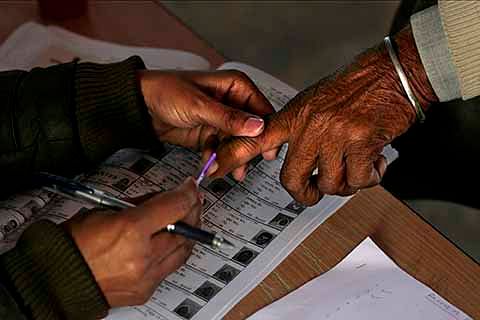With the arrival of March, India will soon go fully into the process to elect the 18th Lok Sabha. While political parties have already got into the election mode, the formal electoral process will begin when the Election Commission announces the election schedule for the new Lok Sabha. That is expected to take place in the next ten days or so. With that the moral code of conduct will become operational and electioneering will gather full steam.
Elections will, as in the past, take place in phases, over April and May. 96 crore Indians will be eligible to vote for 543 Lok Sabha seats. The election exercise for the Lok Sabha has always been mammoth and is a test for not only the Election Commission but India’s administrative apparatus which virtually comes under the control of the Commission. In the past elections have been held smoothly and efficiently. There is no doubt that that tradition will endure in the coming elections.
It would be no exaggeration to note that the world has always wondered at the manner in which India is able to conduct elections of such gigantic scope so well. It is also always struck by the fact that election results are accepted by the people and new governments, including those which have in the past, involved the transfer of power from the ruling party or coalitions to the opposition, have been formed quickly. And, that governments formed after the elections have the acceptance of the people.
From this perspective the Indian people have always shown remarkable political maturity and so has the country’s political class. It would not be out of place to recall that the India’s constitution makers relied on the political sagacity of the people; hence, they decided that the bedrock of Indian democracy would be adult suffrage. Initially, the minimum voting age was 21 years but the 61stconstitutional amendment in 1988 reduced it to 18 years.
The constitutional amendment bill noted, inter alia, in the Statement on Objects and Reasons appended to it “The present-day youth are literate and enlightened and the lowering of the voting age would provide to the unrepresented youth of the country an opportunity to give vent to their feelings and help them become a part of the political process. The present-day youth are very much politically conscious”.
Thirty-six years after this laudable amendment was made the “enlightenment” and “political consciousness’’ given as its reasons seem valid but not literacy. Indeed, western political scientists wondered for some decades if democracy was possible in a society where illiteracy was so high. The Indian electorate demonstrated that all people, whether literate or not, have a sure idea of their interests and know the value of their vote.
Thus, by 1988 when the 61st amendment was adopted the Indian people had demolished the idea that an educated or, at a minimum, a literate society was essential for the maintenance of democracy. Strangely, those who wrote the Statement of Objects and Reasons for the 61st amendment mentioned echoed a Western political idea which the Indian electorate had itself put to rest.
Successive Indian governments have placed emphasis on this country’s soft power. The present government has taken great pains to project its various aspects. It has gone to India’s cultural heritage and the wisdom contained in it to present it to the world.
This heritage has included Yoga. The United Nations General Assembly decided to designate June 21st every year as the International Day of Yoga. In doing so it recognized Yoga and its benefits to human physical and mental health of universal significance. The Modi government successfully made Yoga as an attribute of India’s soft power.
In the context of soft power there is perhaps nothing greater in India’s repertoire than its democracy and pluralism. Today, India is the world’s most populous country. Its population constitutes one-sixth of humanity. It is perhaps a cliché but it is nevertheless true that there is no spiritual quest or religion or faith which does not have adherents in India. The Indian constitution in Article 15 (1) mandates
“The state shall not discriminate against any citizen on grounds only of religion, race, caste, sex, place of birth or any of them”. It is significant that religion is the first ground mentioned in Article 15 (1). At a time when the world is filled with confrontation because of ideological and theological differences, India’s democracy can be a beacon light for peoples everywhere. India’s pluralism is a precious heritage of its national movement.
That movement was not only for political freedom from colonial rule but for preserving the plural and diverse traditions of the crores who inhabited this vast land. And, within their plurality and diversity they were bound by an inherent unity.
Each Indian national election is a precious occasion to renew India’s commitment to the democratic and plural and inclusive vision of the leaders of the freedom movement led by Mahatma Gandhi. It is an opportunity for each Indian to give ‘life’ to the most potent ‘position’ that any Indian can have. That position is contained in the words ‘citizen of India’.
The power that each Indian has lies in his vote. The world accepts that Indians, despite the massiveness of the administrative challenge that each election means, have the liberty to exercise their vote freely and without fear. It is the duty of the Election Commission and the administrative apparatus to ensure that. Can there ever be a more substantive attribute or manifestation of India’s soft power?







